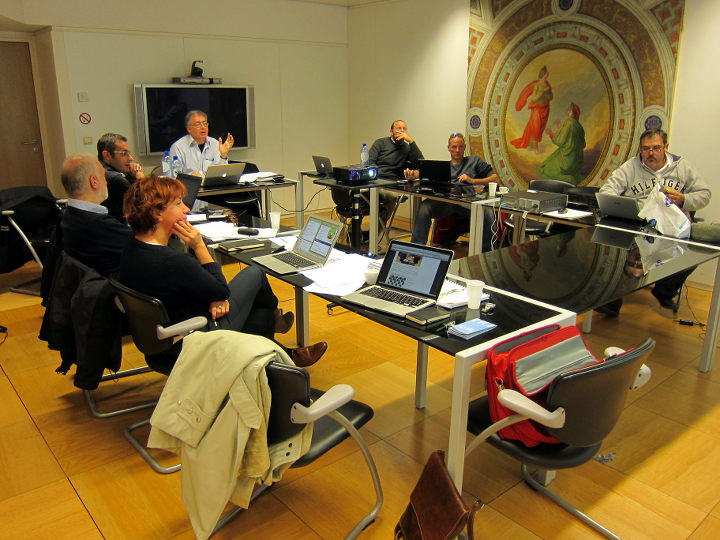FET project TOPDRIM opened a new line of research using a branch of mathematics (topology) to explore massive amounts of data looking for hidden patterns of correlated information. Two of their original researchers tells us their story.

If you tell a physicist, «I give you a bunch of electric charges and currents, what can you do?» She soon answers «I have Maxwell’s equations, I can compute the electromagnetic field at every point of the ambient space».
If you tell a physicist, «I give you a bunch of masses, what can you do?» He smiles and answers «I have Einstein’s equations, I can compute the geometry at every point of space-time».
If you tell a physicist, a computer scientist, a mathematician or anybody else, «I give you a bunch of data with unknown relations, what can you do?»
This is the question we asked ourselves when we met at the FET Infoday in Brussel in 2011. We are researchers with a different background but common intuition of the complexity of the above question. A physicist who believes that topology could lead to new mathematics for understanding complex systems and a computer scientist who wish to model the environment of a multiagent system with a multiscale shape. Since topology allows us to study the shape of a massive dataset, both of us were very curious to explore what original technologies the new research field would convey. This story tells you how the FP7 FET-Proactive TOPDRIM project proposal started.
The TOPDRIM journey was long and winding, often exciting. The most remarkable moment was during the final review meeting when one of the reviewers, appreciating the TOPDRIM results, suggested to take into consideration the possibility to give rise a European start-up. The new business would thus have filled a gap uncovered by worldwide companies.
We are very proud of the TOPDRIM results, especially for having been able to combine topology and information theory in a methodological scheme appropriate to construct shapes from massive amount of data. Once you have the shape, its partition in equivalence classes allows you to identify information patters, that are algorithms or more generally automata. Today, a group of scientists contaminated by the vision of TOPDRIM is inspiring new research methods in the life sciences: an unprecedented vision of the immune system or the bold pursue of the semantic functions of the connectome; the turbulent flow of the financial market or the intricacies of natural language processing, and so on and so forth. Others are still challenging basic crucial and conjectural questions, dreaming the birth of a real theory supporting the machine learning paradigm.
The impact of EU funding has been extraordinarily important for the TOPDRIM project at least for three reasons: first of all, without the FET program, the group of scientists involved in TOPDRIM would never have met and the new European community working around topology and complex systems with its pivot in applications may never have been born; TOPDRIM offered partners the opportunity to emerge and gain international credibility on data driven approach, theory and models; and, last but not least, FET has accelerated the formation of a new generation of young researchers who have been trained to face the fifth IT revolution, the era of Big Data, whose impact will influence our entire daily life, from medicine to human security and to climate change.
The TOPDRIM project has had an impact not only in Europe, but also in the United States and in the world, in many research environments, including the industrial one we can find researchers were involved in the project activities. These are also the same reasons why this can be considered a real "European" project: to create synergies in Europe in order to emerge and compete internationally.
The technologies developed, and deriving naturally from basic research, are already in use; the software that allows to perform the analysis of topological data on weighted graphs has been used in the production of various scientific works also in the medical field (neuroscience, immunology and pneumology). What we hope for the future is that this software will be enhanced and improved.

